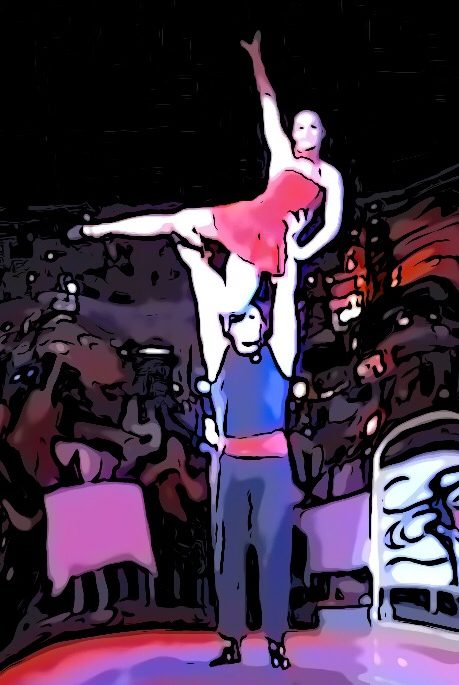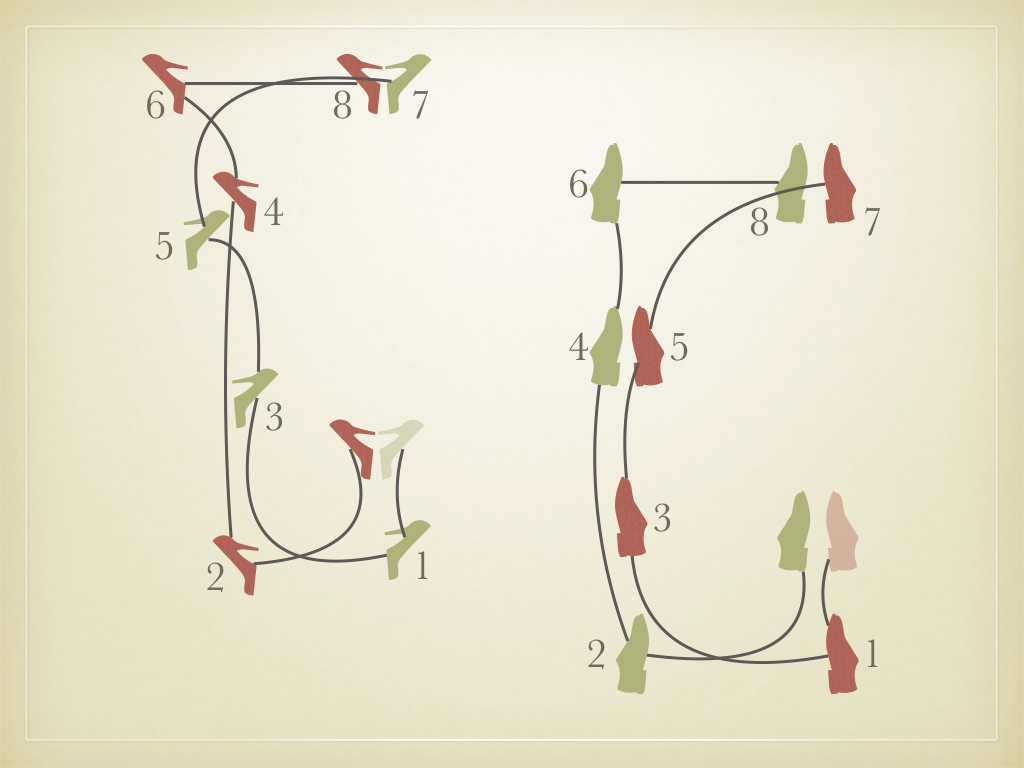The Salida (= Start) is a step pattern (basic pattern) of the tango that can be adapted to any rhythm:
Lady starts with left forwards, man with right backwards…
- one (small) step against the dance direction (2 lane)
- one step sideways to the middle (with change from 2 to 3 lane)
- a step outside of the partner in dance direction (3 lane with dissociation)
- a step in the dance direction (3 lane)
- close (with weight shift and change from 3 to 2 lane) → the lady crosses to precede (comparable to the left turned Viennese waltz)
- a step in the dance direction (2 lane)
- a step sideways to the border
- close (with weight shift)
Movement:
For the beginner Salida contains 2 important lessons:
- the weight shift when closing (step 5 and 8)
- the change from 2 to 3 lane and back (step 3 and 5)
The closing with a weight shift is initially like a gambling, which only gets better when you find your own axis and start feeling your partner’s axis. Even experienced Tanguer@s often do not make it easy for their partner if they do not go down with their heels (kissing the floor) and dance only on their footpads. The next step may be very surprising…
The change from 2 to 3 lane requires a sideways displacement of the partners. At the same time, however, the partners should stay in front of each other!? This succeeds only with a body counter movement (= dissociation). While the next step is placed sideways past the partner, the partners rotate in the middle of the body to each other. The feeling is similar to cycling when you turn sideways and the bike still continues to drive straight out.
In order to come back face to face in 2 lane when closing, the lady needs to cross her legs. Otherwise, the partners are 4 lane next to each other! If the man does not resolve the dissociation, the lady will neither cross her legs nor shift the weight.
Music:
Usually, the Salida starts with the first main beat and ends with the 8th. In my understanding, this includes exactly one phrase. Of course, there are many different views on how many main strokes (= beats) belong to a phrase. This obviously also depends on the respective notation. A main stroke is easy to hear, as it is the rhythm you would intuitively clap. Mostly in tango, a bar is composed of 2 main strokes, suggesting that a phrase spans 4 bars.
Of course, the Tango Argentino is so versatile that suitable examples can be found for each opinion. I plead for a phrase with 8 main strokes, because the melody very often passes the 5th beat and does not drop again until the 8th beat … e.g. Nunca Mas by D’Arienzo, Arrabal by Pugliese, La torcacita by di Sarli, Tomasito by Sassone, Guardia Vieja by de Angelis, … This behavior is also often referred to as a question and answer within a phrase. If the question is asked with legato, the staccato is a good answer … and vice versa.
Steps 2 – 7 may also be adapted individually to the syncope in rhythm, or to the melody. Experienced Tanguer@s let also Pivots or Adornos flow into this basic pattern of the Salida. Man and lady can also dance their steps with different rhythms. As complex as the tango is, so diverse are the possibilities of the Salida!
Deutsch

